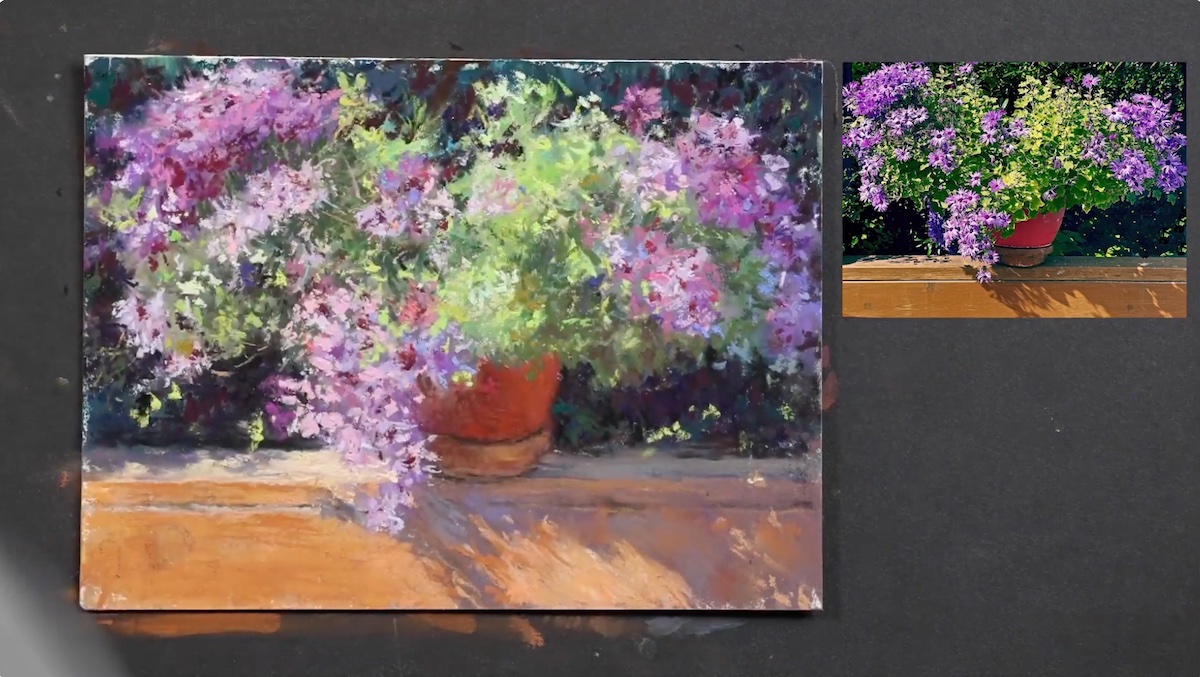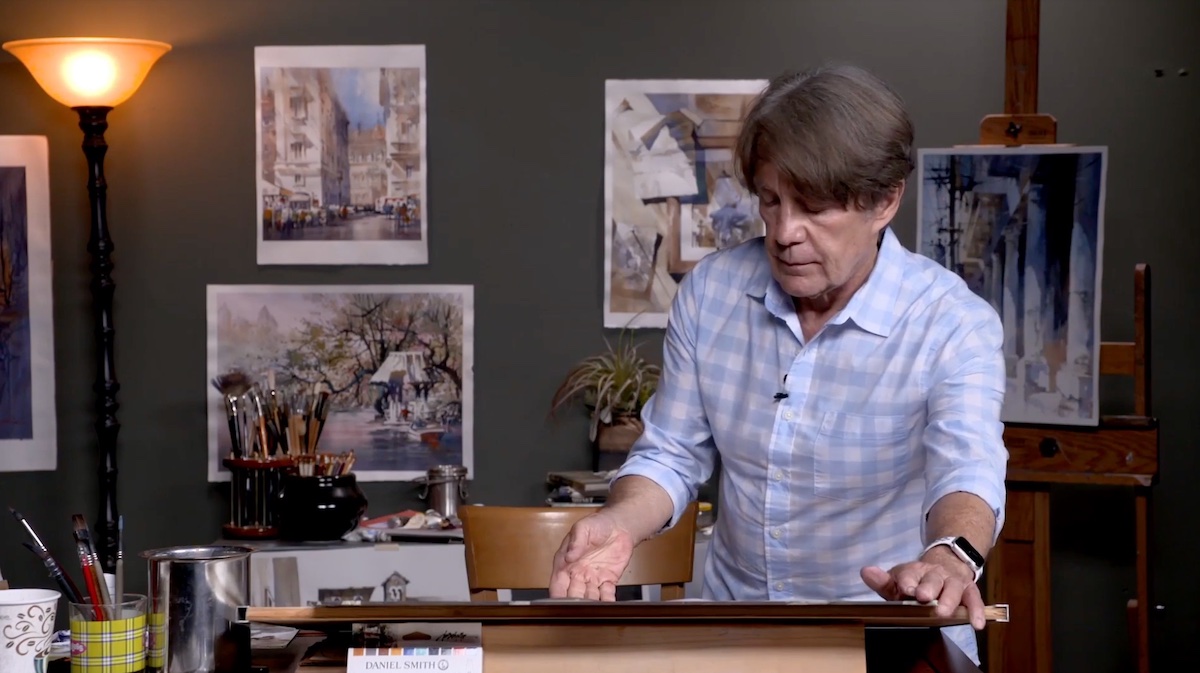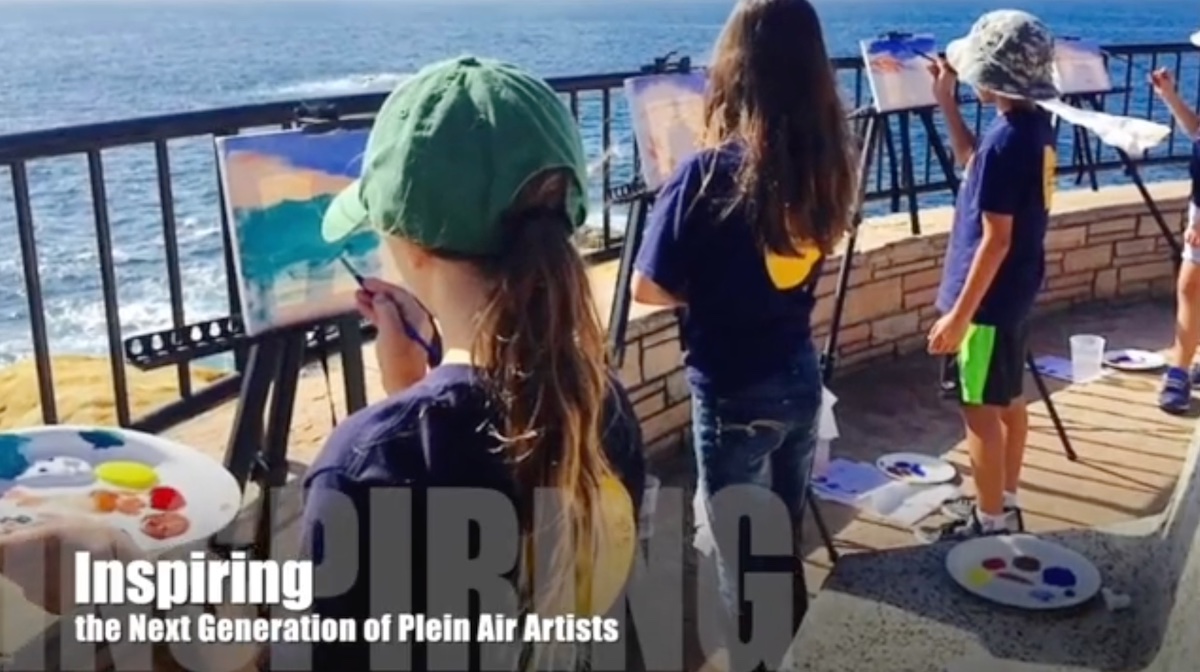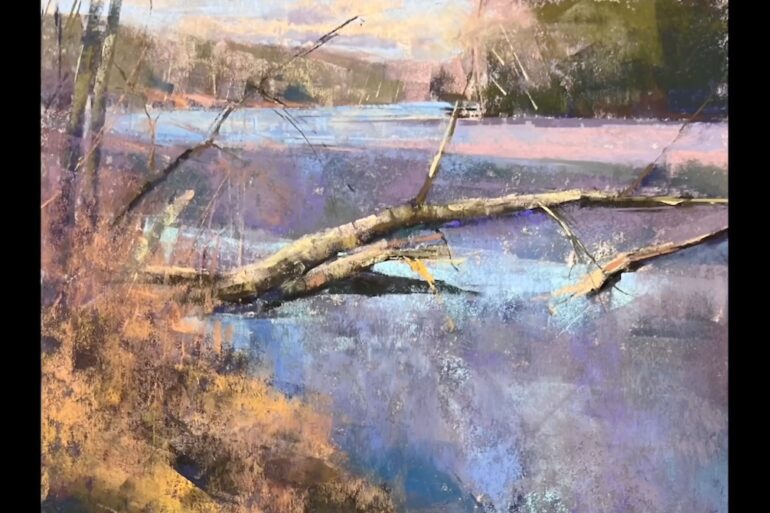
This post is also available in:

The second day of the fourth edition of Plein Air Live presented another roster of extraordinary artists, united by their love of Plein Air painting and their desire to pass on their knowledge. During the events there are many opportunities to interact directly with faculty members, not only during the demonstration session hours but also during the Breakout Rooms and the Paint Along/ Cocktail Hour.
In fact, the artists put themselves on a par with the participants, to whom they allow to enter their delicate and complex world of which they share viewpoints, techniques and knowledge. A world where there is no more or less correct method of approaching plein air painting and where all that matters is to fix the beauty of a moment or an emotion aroused by a landscape.
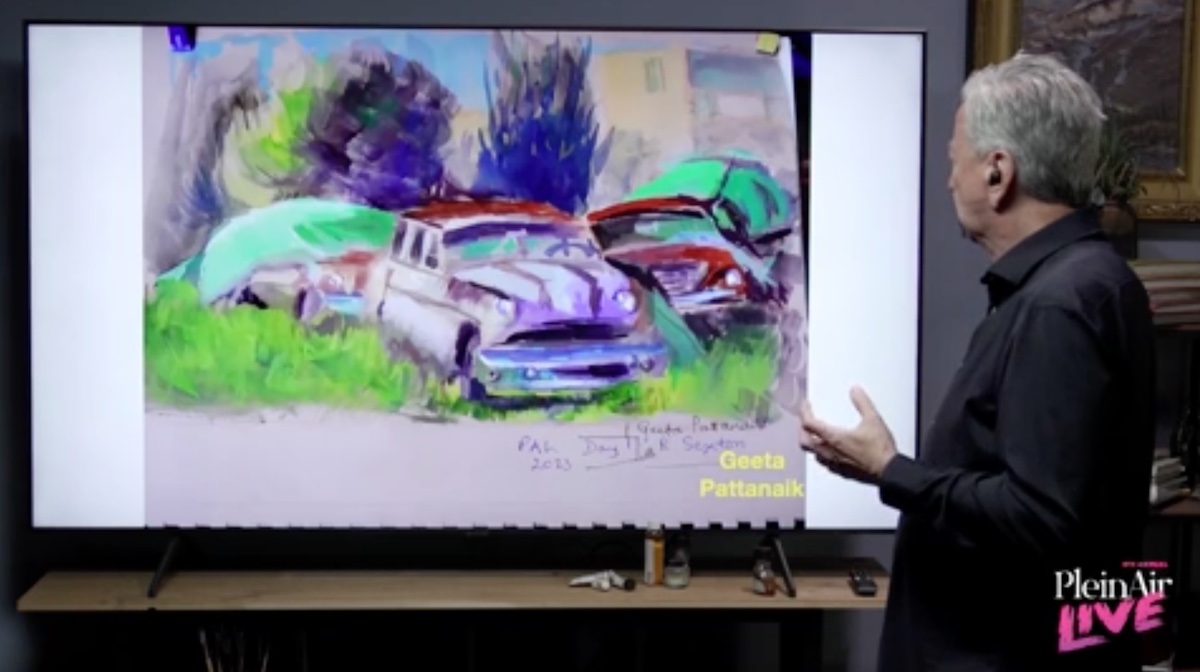
The first artist to enter the long educational day was Matt Ryder. The British-born artist currently living in the United Arab Emirates could not resist the temptation to paint a fascinating cluster of rocks from the Fujairah area, one of the seven emirates of the United Arab Emirates (UAE): an element as visually simple as it is fascinating.
His approach to composition, as well as his choice of palette, is the same as when he does floral paintings: another genre for which he is highly regarded. In the demonstration session he exercised the task of “guide” by delving participants into his compositional process based initially on establishing key points on a still wet underpainting. “Establishing the initial key points is very useful especially to be able to speak the color language of the subsequent steps,” said the artist who made a clear distinction between colors used for underpainting and compositional colors.
With tonal values he later emphasized the atmospheric perspective by painting the sky in a kind of negative painting, while with midtones he delved into the making of rocks: a process that begins with the general drafting of colors that he later refines with temperature variations and contrasts by highlighting the different color tones, which he paints -initially- by color analogy, with his own method. “Chasing shadows is one of the most fun parts of the compositional process,” said the artist who spent most of his time in finishing this process, of which he said, “Sometimes, I like to start cool and then layer warms into the shadow.” However, Ryder who also suggests not insisting on prolonged observation of the shadows in the rocks, for which it then becomes difficult to see the base color. “In this work instinct is a very good ally, so trust it!” said the artist who dispensed some advice that, in general, always works: warm light for cold shadows and cold light for warm shadows.
The construction and diversification of the rocks is the most interesting part of the process since each rock affects the other starting from a general average value on which he later adds lights and shadows, of different temperatures, that make the rocks and their jagged edges emerge.
A big fan of plein-air painting he says one should spend at least two hours a day immersed in nature, “a great way to connect with it for the benefit of health and the refinement of the ability to observe from life,” said the artist who considers plein air as a time for experimentation and fun.
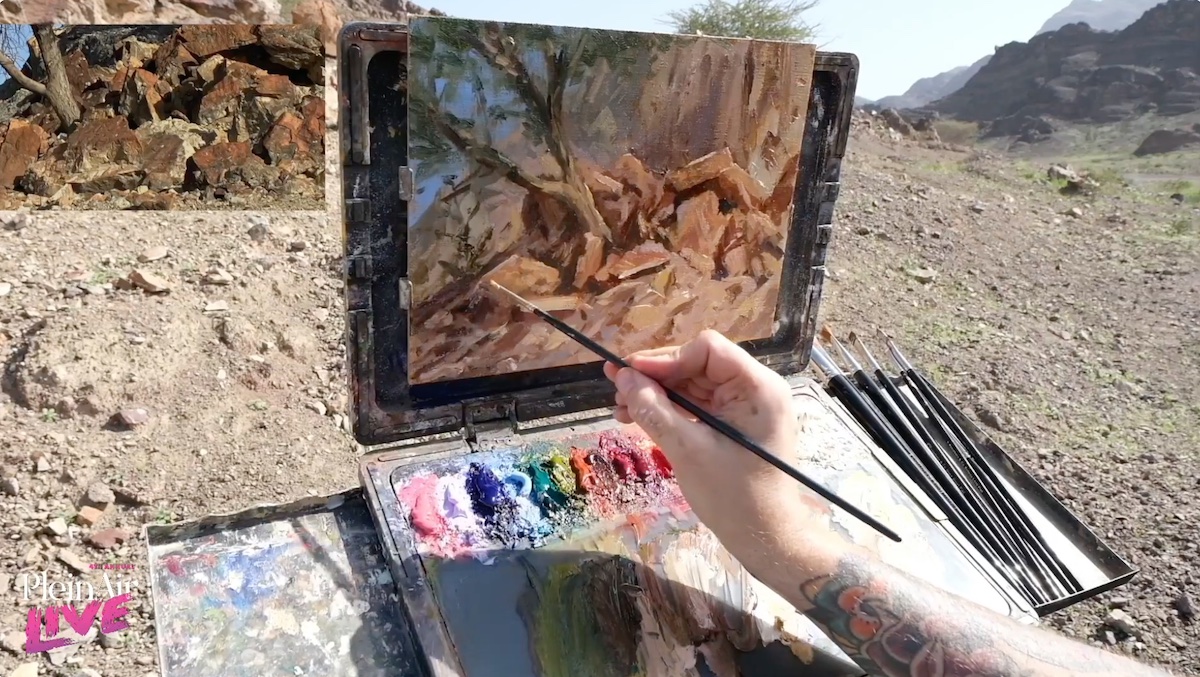
“I’m one of the few that just wants to dive into painting and skip my veggies, “said artist Steven S. Walker, who to the rumours prefers the action of brushstrokes on canvas with which he captures the emotions aroused by his surroundings.
Steven Walken created a painting of the backyard of his home in Hahira, South Georgia, with which he highlighted the construction of light filtering through the pine trees of the surrounding vegetation.
The artist worked on a 12 x 12″ aluminum panel that he purchased, as usual, from road sign manufacturers and coats with a special boat primer. The aluminum substrate presents some considerable peculiarities, such as: the ability not to deform, the ability to quickly absorb color, and impact resistance. An aspect of the latter to be particularly taken into account in the representation of outdoor painting.
Beginning with the structural composition composed of vertical and horizontal lines, he established the design by working from background to foreground, from larger to smaller shapes with the same brush, which he changed only in the realization of the final compositional details , made with touches of color that emphasized the atmospheric perspective. Walker insisted on the realization from the negative spaces between the trees and then moved on to defining the multiple variations of light on the ground, of which he is keen to point out, “make sure that the mark on the ground is consistent like the mark on the cast shadows,” said the artist. The result of his demo is a glorious play of saturated colors that he de-saturates at the end of the composition to create chromatic harmony. A very unique approach and completely different from the demonstrations seen so far.
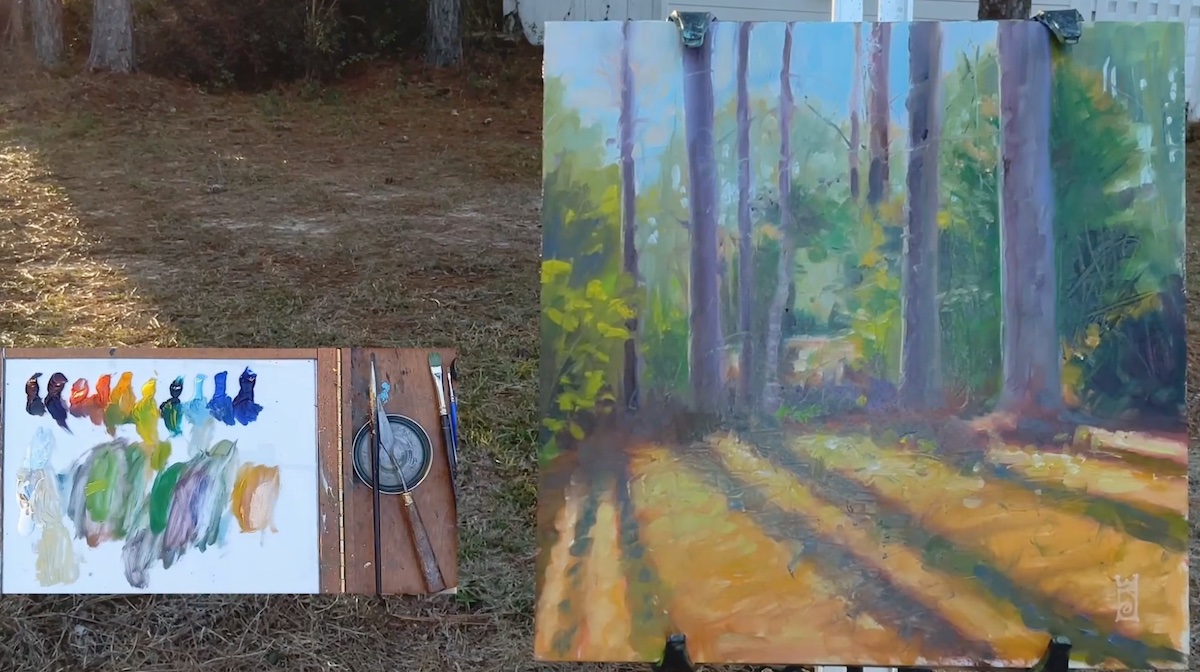
In the afternoon session, Kally Kane, co-host of the event, interviewed three iconic living legends of plein air painting, Bill Anton, Matt Smith, and Skip Whitcomb.
Longtime friends who initially knew each other only by reputation, they later met, sharing not only a passion for Plein Air painting but also a love for the quality of their works: all extraordinary if different in style and genre. During the pleasant chat -one of the most intense, profound and sincere sessions in which the nobility of spirit that characterizes these three great artists emerges in all its beauty- the three bared their souls telling anecdotes and crucial points that represented their turning point in plein air painting. The ability to put their emotions on canvas goes hand in hand with the intensity and depth of their reflections. According to Bill Anton, a lover of western scenes in which favorite subjects are cowboys, animals and wildlife, plein air painting is a discipline in its own right that must be pursued with rigor and in respect for the craft and tradition. Matt Smith, a lover of traditional landscapes inspired by the unspoiled landscapes of the American West, argues that plein air painting is also a valuable tool with which to infect people and direct them to find inspiration in the deepest part of ourselves, in which nature plays the key role. For Skip Whitcomb, stimulated in the painting of compelling places that also take on spiritual significance for him, plein air painting is a process that requires much preparation both mentally and physically, in which there is no room for personal ego in favor of the sincere friendship that is established between the artists.
The three -all with academic backgrounds behind them- told of the need that drove them toward outdoor painting and the difficulties they encountered in the transition from academic to plein air painting, which has finally gained the prominence it deserves over time.
In addition to having personally contributed in the revaluation of this genre of painting, they unanimously declared themselves surprised by the quality of the pictorial works of many young and sometimes unknown artists, which bode well for both the future of plein air painting and respect for nature.
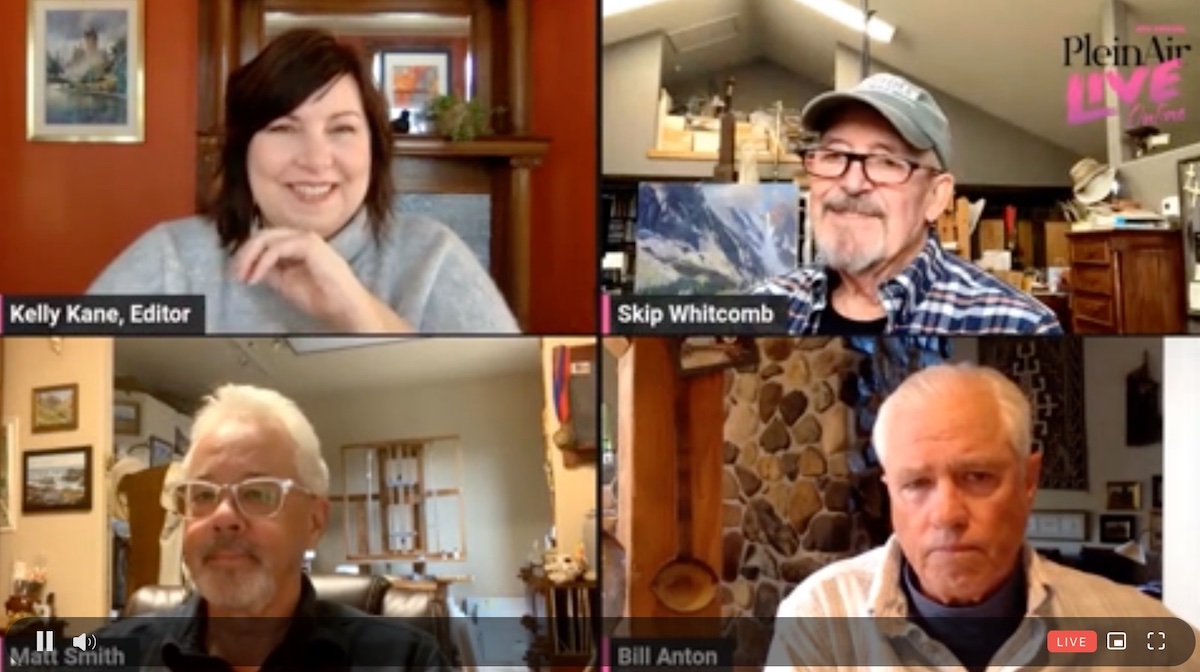
The talented artist Jacob Aguiar, who considers pastel painting to be “a blast,” made the excerpt of a local pond in Massachusett, a location he usually frequents with his family during the summer months. He made it from an extraordinary underpainting played exclusively on the neutral Violet color with which he blocked out the shapes working from light to dark. The use of a monochromatic underpainting is very important for Aguiar because it allows to eliminate the stress of using colors in the drafting of tonal values: a sometimes difficult step, especially for novices.
He worked on UART 400 grid paper dry mouted to acid free foam core that then he tapes on another board.
Paying attention to linear perspective, he created the compositional structure that he diluted with a brush dipped in alcohol with which he blended the color on the paper, paying attention to several components, such as: hand pressure, directional sense of the brush, and the natural movement of the elements. After the paper dried, he began to spread the colors: from the darkest to the lightest exploiting all sides of the pastel -predominantly hard- and in a continuous back and forth.
Among the various suggestions dispensed by the artist, who achieved a masterpiece even in the initial monochromatic drafting alone, is the correct arrangement of colors, which he organizes by hue proceeding from left to right, starting with the color green to which he follows up with colors on the basis of the color wheel. He also divides them according to values: lighter at the top and darker at the bottom.
Among the artist’s favorite brands are Sennelier and Nunpastel, and he advised those who want to experiment with pastel painting to start with limited number of colors. Aguiar, who declared himself totally addicted to plein air painting, said he finalizes the composition with a simple but necessary question, “Can I still make improvements to my composition? “If the answer is no, the artist suggests stopping the composition to avoid overloading it to its detriment.
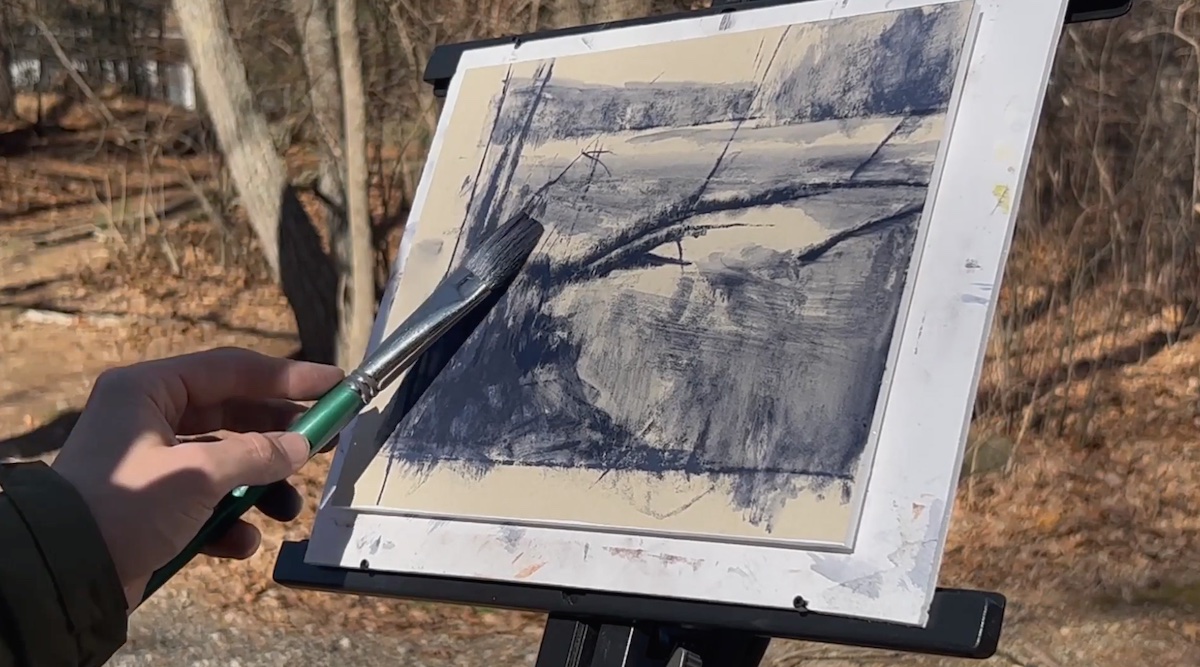
Aimee Erickson’s ability to capture color changes as the sun goes down is truly amazing. In fact, for the demonstration session she depicted the last moments of light in a garden park in Portland, Oregon, which she made from a limited palette of colors.
The beauty of the limited palette according to the artist is due to the fact that :” color harmony is never far away.”
Working on a 12 x 16” panel -a sufficient size to be able to capture the variations of light in a very short time frame indeed- she showed how painting the sunset or the sunrise from plain air is a great challenge, even for the most skilled of artists.
The reason for this is mainly due to the sudden changes in light peer to which, according to the artist, it is therefore necessary to be familiar with this kind of painting that requires a lot of skill, time and patience. In order to be able to capture even the slightest nuances Erickson showed how to make the best use of electronic devices that allow you to enlarge parts of the scene otherwise not visible in the distance.
In addition to the design choice made in the immediate time, in order to avoid losing atmospheric nuances that cannot be replicated, Erickson followed up by applying a very dark purplish color composed of red -Michael Harding Permanent Orange- and blue. This combination makes for a very dark color from which she started to create the background texture. “The dark value of the background is not the most exciting part of the composition but it serves to support the rest,” said the artist who later arranged, from bottom to top, the lighter shades with a careful color transition that she performs simultaneously by working on colors temperature, values and hues that then she shifts simultaneously with a big strokes. Both in the drafting of the initial large masses and in the definition of the details she helped herself with a palette knife that she moved in different ways: with a horizontal, flat strokes in the early stages of homogenizing the color, to the small touches of color with which she caresses the canvas to emphasize the highlights and the dense texture of the oil. Once she has finished defining the dark areas, she enters into the vividness of the lights, which is the most fascinating part of the composition with the sky and its thousand shades of color in a perpetual race against time in which her visual memory is an excellent ally. Among the colors the artist says she loves and constantly uses in her paintings is pink, which she tends to put just about everywhere and of which she says, “when you are in dubt add pink.” Aimee Erickson has finish to write her first book, titled: “Plain Air Techniques for Artists,” which will be on the market starting April 4 and in which, in addition to providing useful technical information, she reveals the names of favorite artists who have contributed to her artistic education.
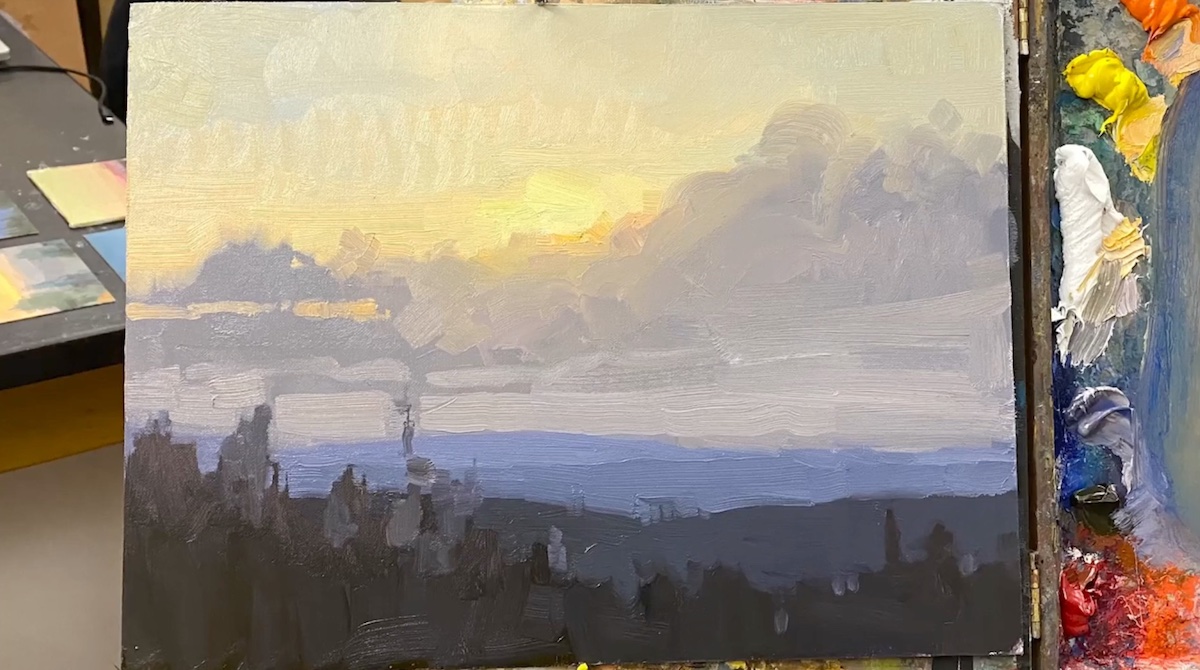
The last artist on the second day of Plein Air Live was Christine Lashley.
How many times have you been on a trip and wanted at all costs to represent the charm of the place you visited without having the time to be able to do it? Lashley, a renowned artist and plein air painting teacher, in her demonstration session highlighted all the techniques she has learned over time and the steps necessary to be able to execute from the room of the studio, the representation of a plein air scene in a truthful manner.
A process that is not simple and that takes into account multiple elements, such as distortions related to the photographic shot, for example. A reason that led Lashley to also use other material to compensate, such as: the recording of 360-degree videos, the realization of quick and multiple sketches made on the spot in which she highlights different compositional sections and the various notes related both to the narration of the details of the scene and in the definition on paper of the colors captured on the spot. The first part of the demonstration, which was purely technical, was followed by the pratical demonstration session with which she put into concrete practice all the tips dispensed in the theoretical session. The result was a mind-blowing composition that could easily have been represented on site and where nothing was left to chance as every element of the painting was supported by documentary and narrative material.
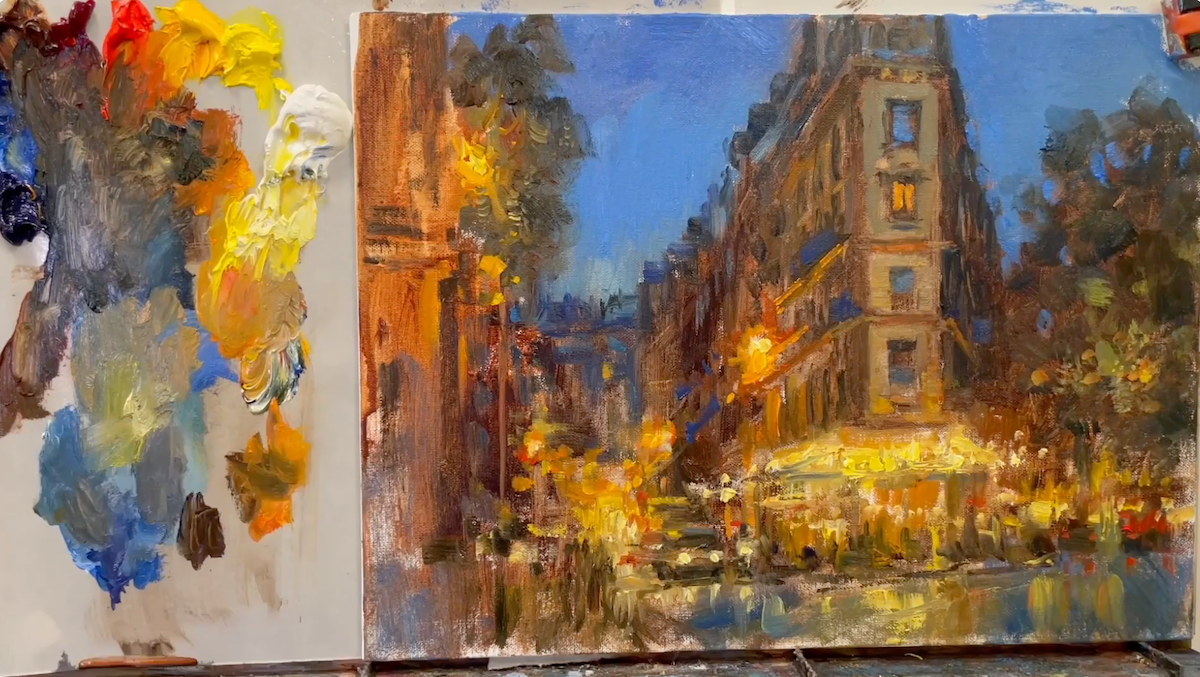
The various demonstration sessions included no shortage of sponsors. Among them Andrew Cook, art educator for MacPherson’s Art, presented some European brands that have made history in art materials: Fabriano paper, Sennelier’s oil and pastel colors, and Raphael brushes that are still made by hand, one by one. In addition to showing the beauty and versatility of the proposed materials Andrew Cook answered numerous questions from the audience. All products presented in Andrew Cook’s demonstration session are available for purchase at both Blick Art Materials and Cheap Joe’s.
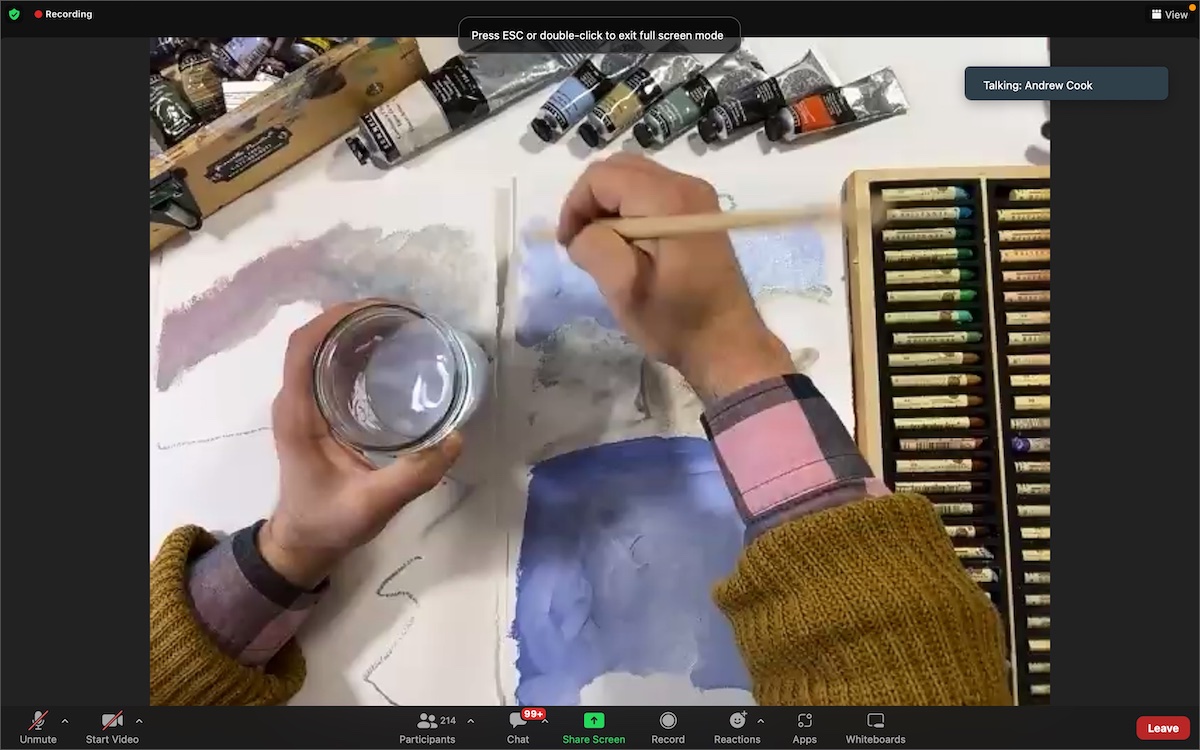
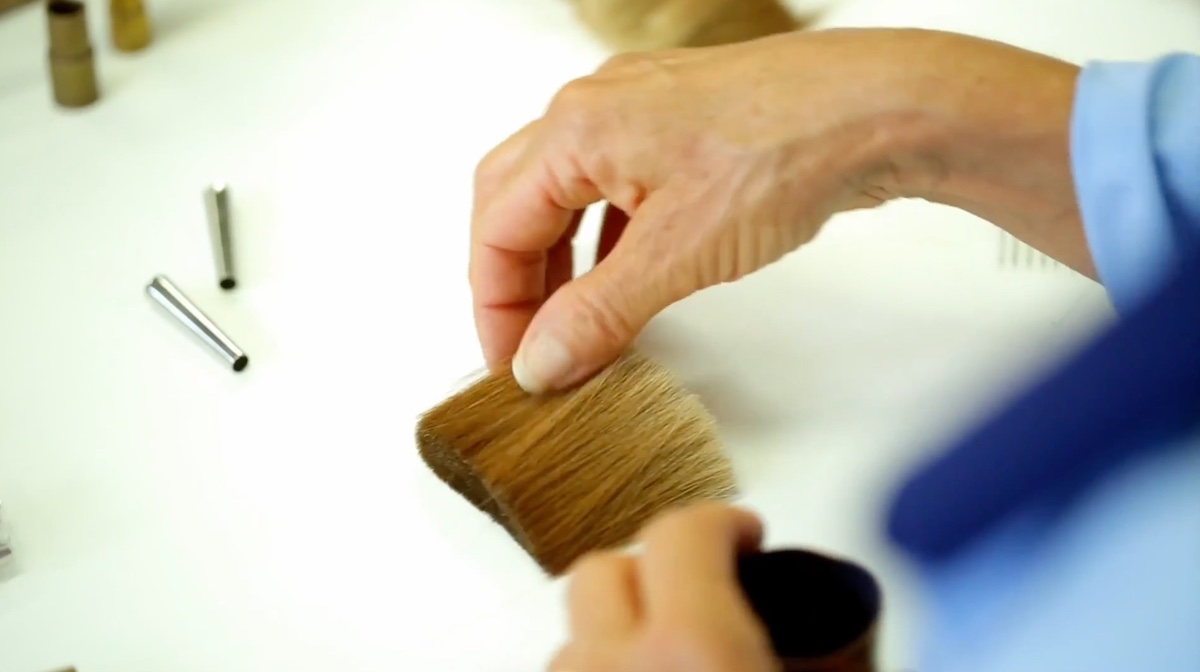
The second day of the event has also come to an end, and Miami Niche looks forward to seeing you tomorrow for a new and unforgettable day of plein air painting.
(on the title: Jacob Aguiar’s final work pastel demonstration)
